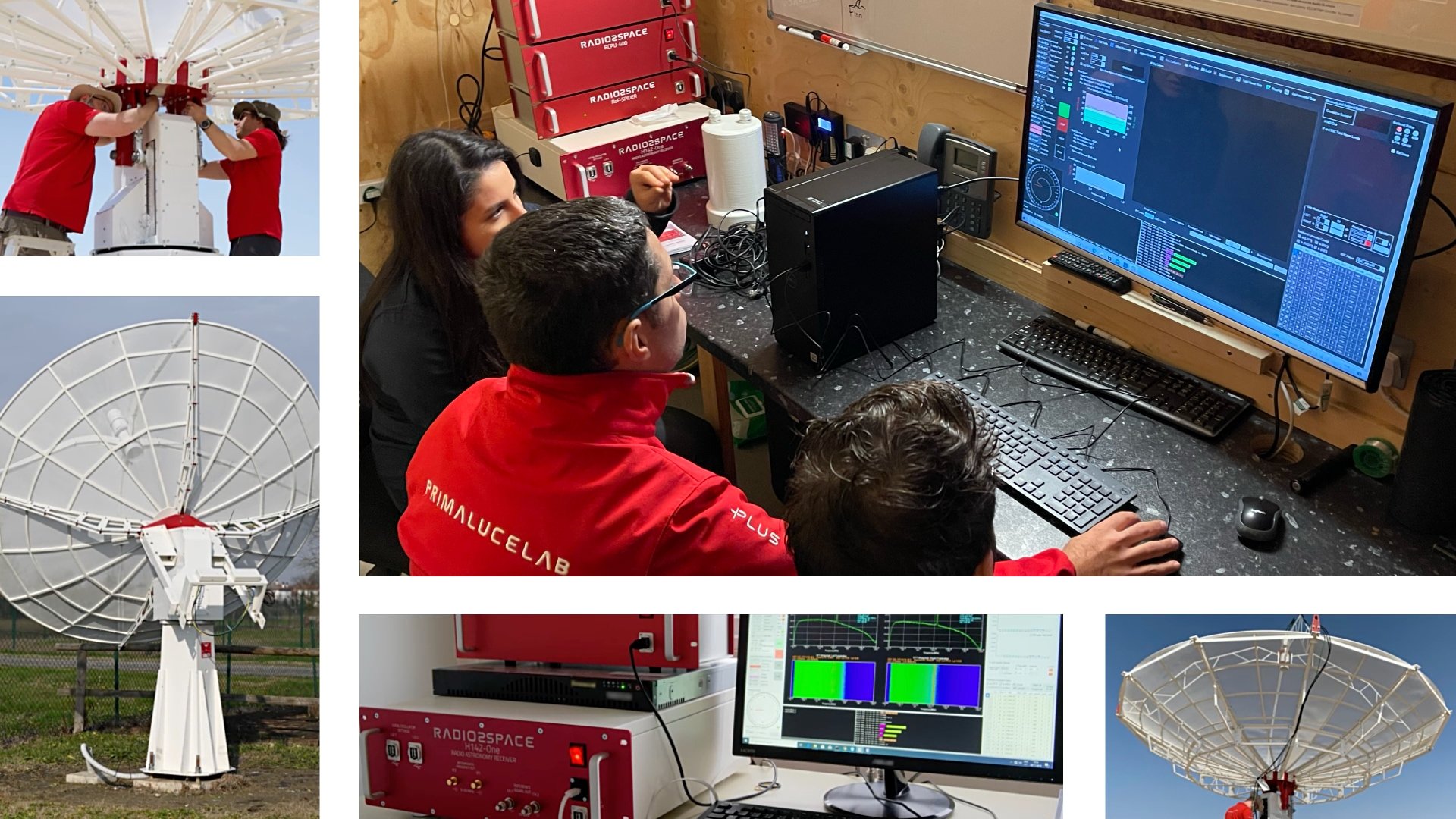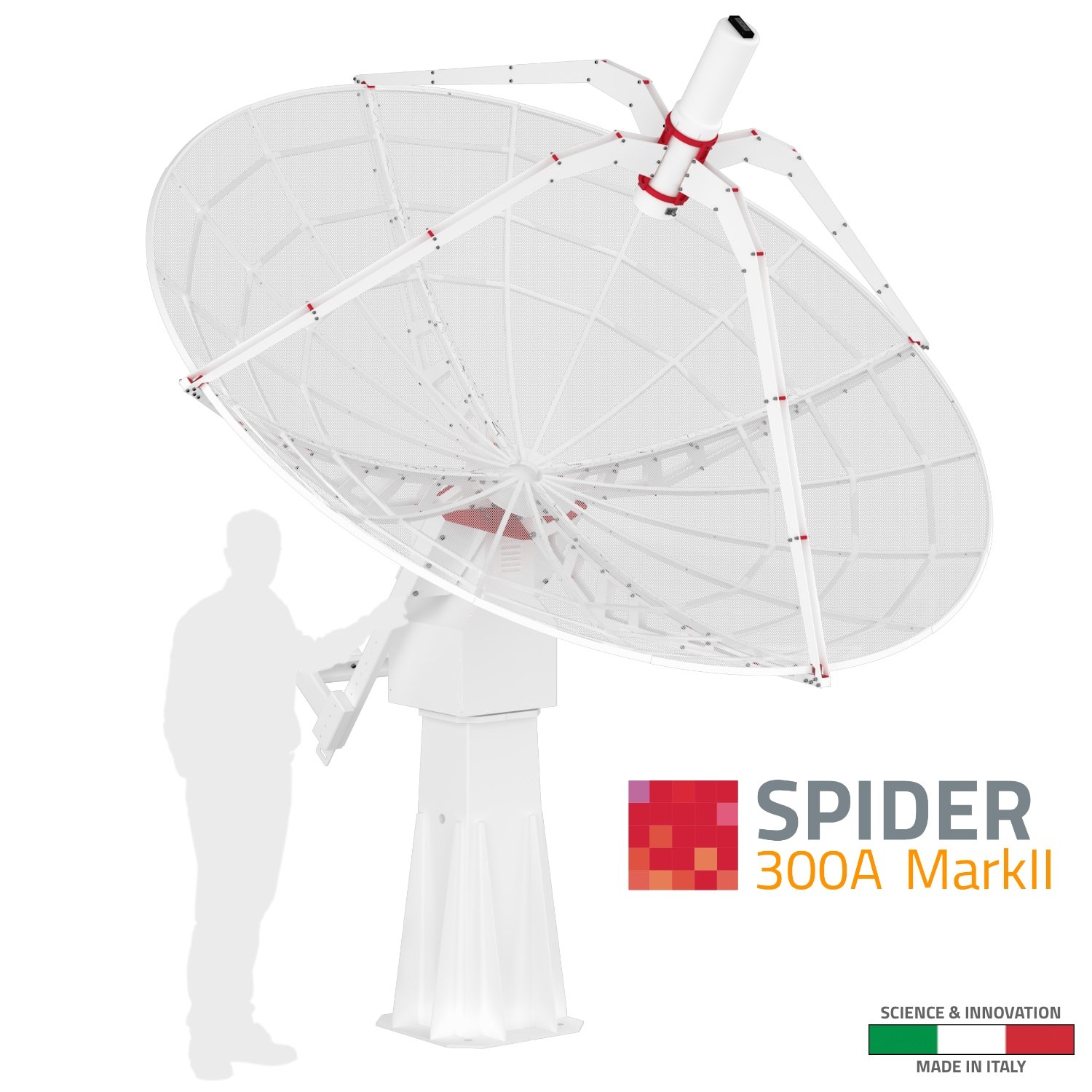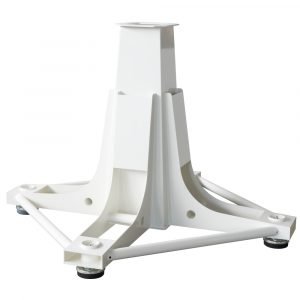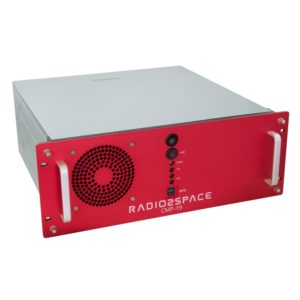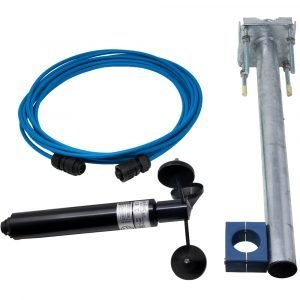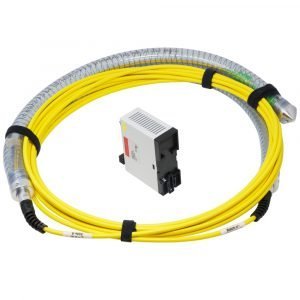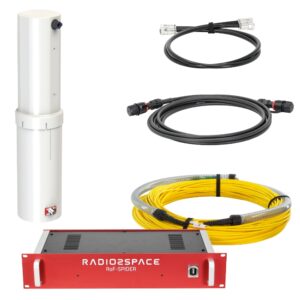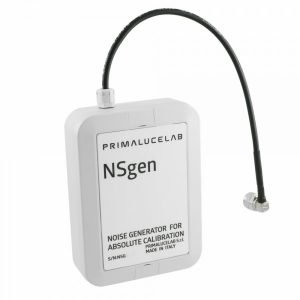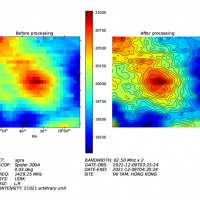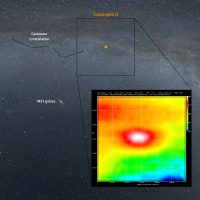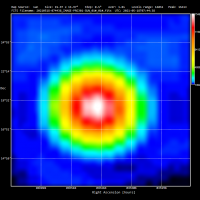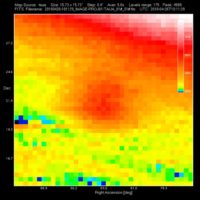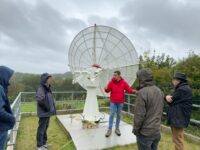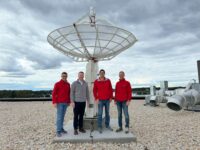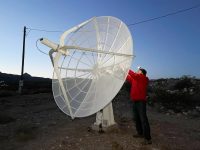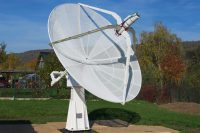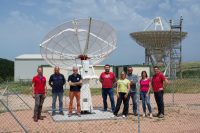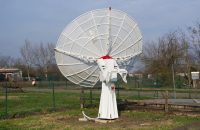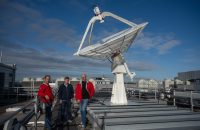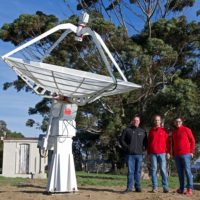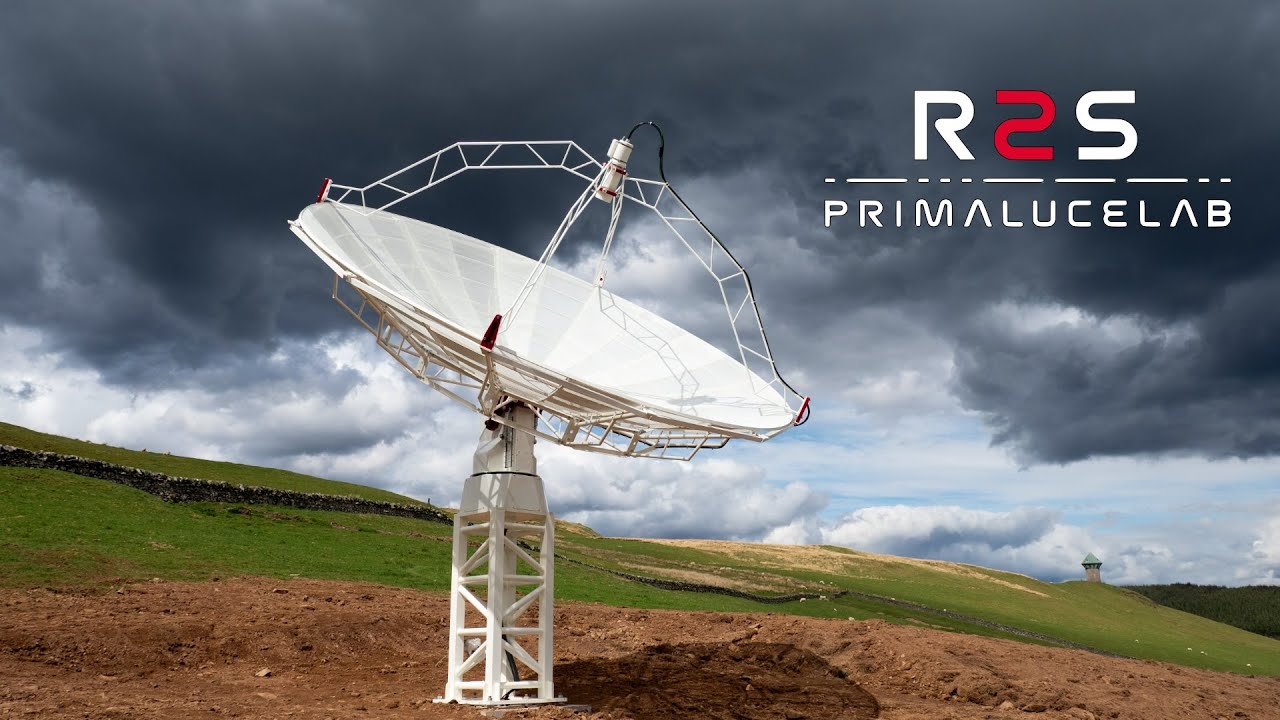SPIDER 300A MarkII 3.0 meter diameter advanced radio telescope for radio astronomy: main features
- SPIDER 300A MarkII advanced radio telescope: powerful but affordable, it’s specifically designed for 1420 MHz radio astronomy.
- WEB300-5 3 meter diameter prime focus antenna with special designed front and rear supports: it comes with 1420 MHz optimised feed and 2 LNAs for LHCP and RHCP circular polarisation.
- GS-100II weatherproof alt-az antenna tracking system with N-ACU Next generation Antenna Control Unit: connected to Control Room with a standard network cable up to 100 meters long, thanks to the optional MoF (Mount-over-Fiber) kit, you can position the antenna even further by replacing the network cable with a dedicated optical fiber that can be up to 2km long.
- C106-HEAVY high load capacity pier for concrete base: designed to keep the radio telescope permanently installed in the field.
- High antenna slewing speed, now up to 2°/sec for each axis, that improves data acquisition time during radio telescope use and integrated safety system with emergency stop button (optional light and audio signals).
- Industrial-Grade temperature working range: SPIDER 300A MarkII antenna and tracking system is able to work in environments with temperatures from -25°C to +55°C
- H142-PRO 1420 MHz radio astronomy receiver, 50 MHz instantaneous bandwidth radiometer and 1024 channels spectrometer to be installed in the control room on a standard 19″ rack or on a table.
- RadioUniversePRO control and acquisition software for Windows 10/11, designed to control all devices of SPIDER radio telescope and to collect radio astronomy data.

SPIDER 300A MarkII advanced radio telescope includes everything you need to make radio astronomy at 1420 MHz frequency. In this video you can see the various elements that make up the radio telescope: antenna, tracking system and pier which are installed outside; receiver and software that are installed in the control room.
WEB300-5: the 3 meter prime focus parabolic antenna
In order to create a powerful but still compact, easy to handle radio telescope, we developed the WEB300-5 antenna that, thanks to 3 meters diameter and fine metallic mesh construction, provides a large collection surface with a low overall weight. Special rear supports maintain the rigidity of the whole parabolic antenna on the mount, avoiding any bending and ensuring the effectiveness of the pointing system. This also helps to maintain an optimal parabolic shape with a maximum error of less than lambda/20. The antenna is shipped divided in 4 parts and it’s easy to assemble. Thanks to specially designed unlock system, you can easily remove the antenna from the tracking system if you want to store it (for example if you want to store it in case of extreme weather conditions).
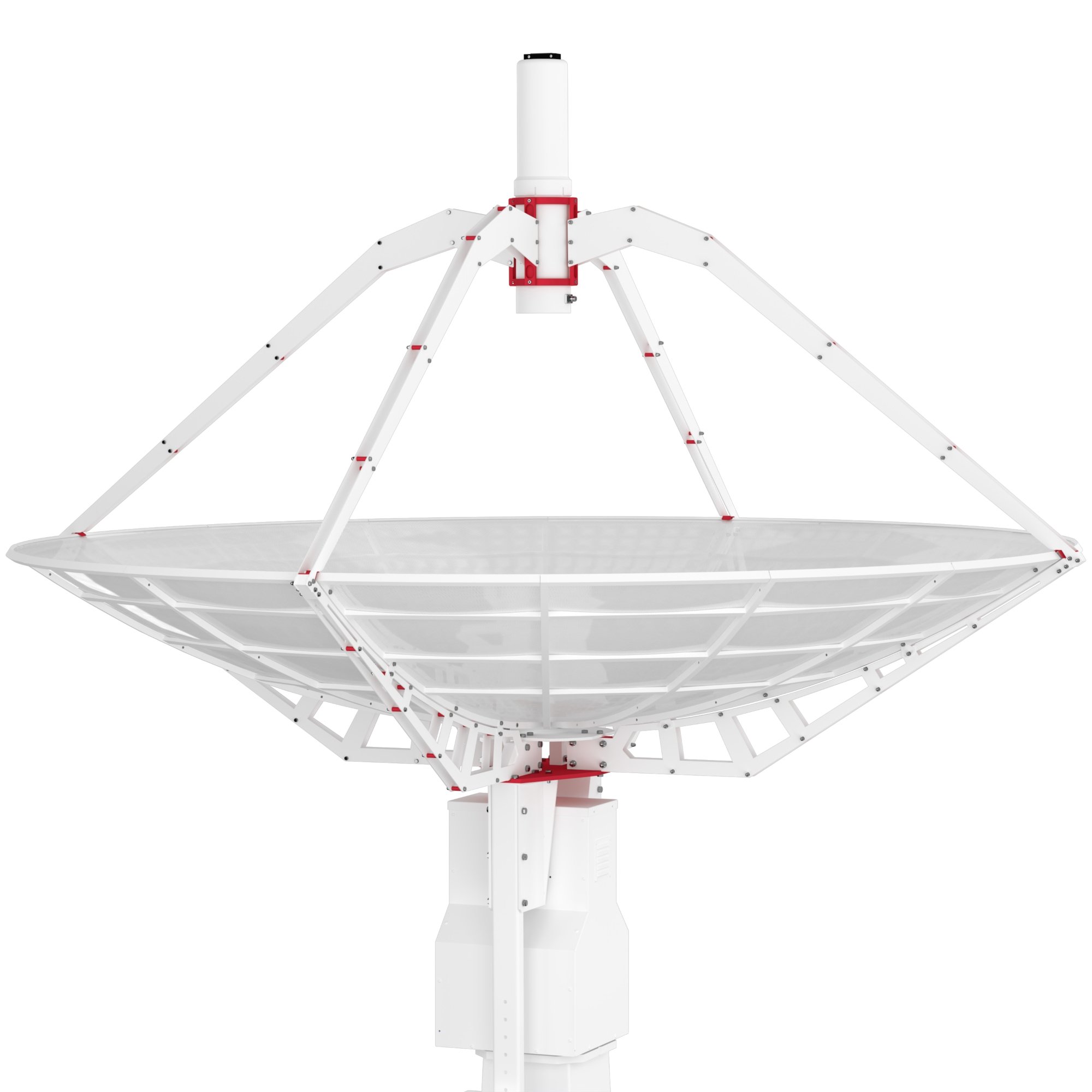
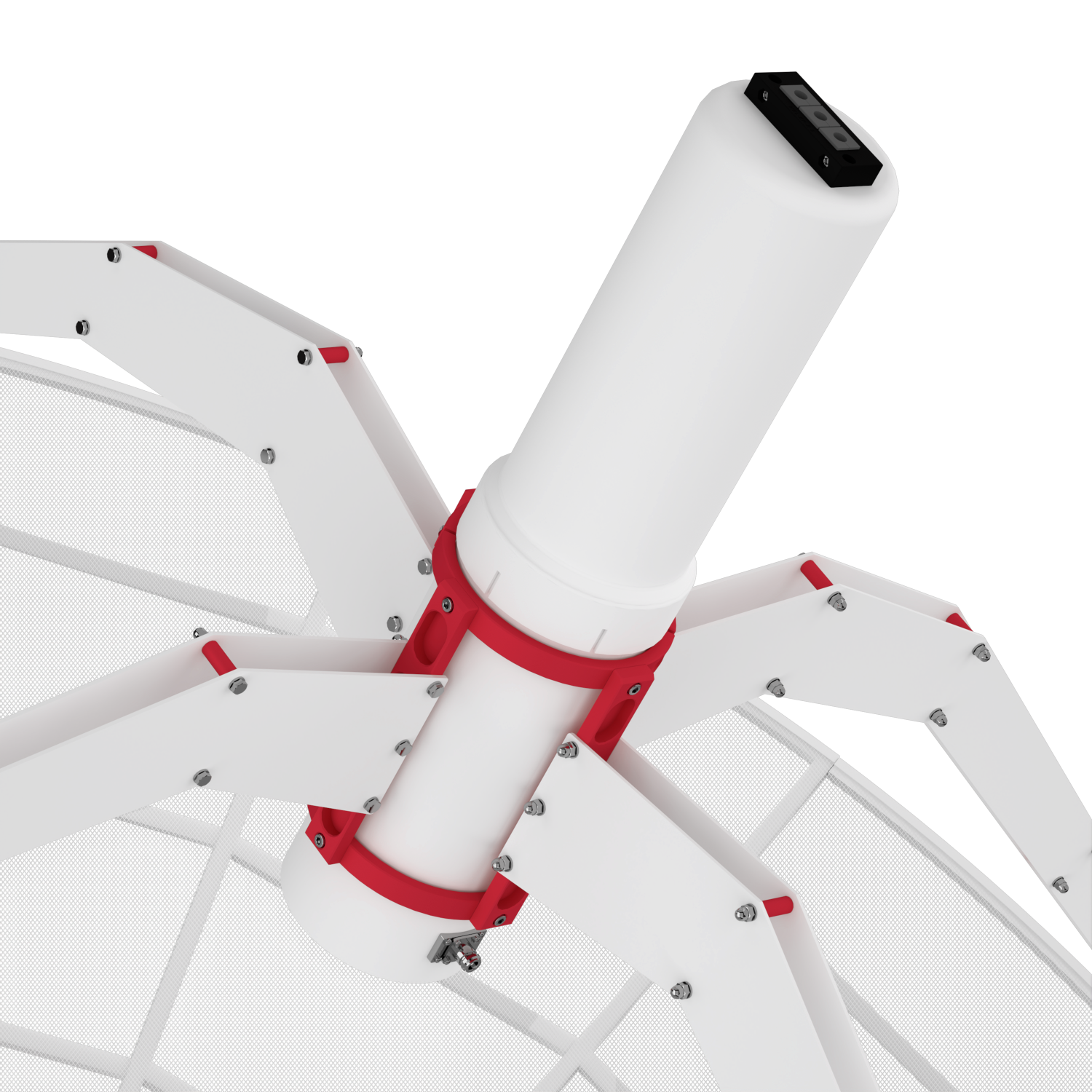
H-FEED: the 1420 MHz optimized feedhorn
Developed specifically for SPIDER radio telescopes, the H-FEED feedhorn is designed for optimal illumination of the primary reflector, allowing for high gain while reducing side lobes and the spillover effect, thus obtaining the best possible performance from the 3 meter parabolic antenna. The feedhorn is designed to allow the reception of dual polarization with support for two professional Low Noise Amplifiers (LNA) for the 1420 MHz frequency. The feedhorn is positioned at the perfect point of focus of the antenna through a rigid structure with four supports to minimize obstruction, with a focusing device to precisely focus and maximize the performance of the entire radio telescope.
GS-100II: the weatherproof antenna tracking system
Radio astronomy can be performed during day or night time – even in cloudy conditions, since the 1420 MHz radio waves are not blocked by clouds. In order to take advantage of this opportunity, we designed the GS-100II weatherproof antenna tracking system allowing you to leave the SPIDER 300A MarkII radio telescope permanently installed outside. Equipped with N-ACU electronics (Next generation Antenna Control Unit) integrated in the tracking system, it offers target high resolution automatic frame and track, advanced remote control features, efficient monitoring and operational analysis of all components of the antenna tracking system. The GS-100II antenna tracking system has a 100 Kg load capacity and encoders with a read resolution of 0,0015°. It can also be equipped with a special electronic security system (optional) which “parks” the antenna pointed at the Zenith (the vertical position where it is safely locked) when the wind exceeds 50 Km/h, offering the lowest resistance to the wind.
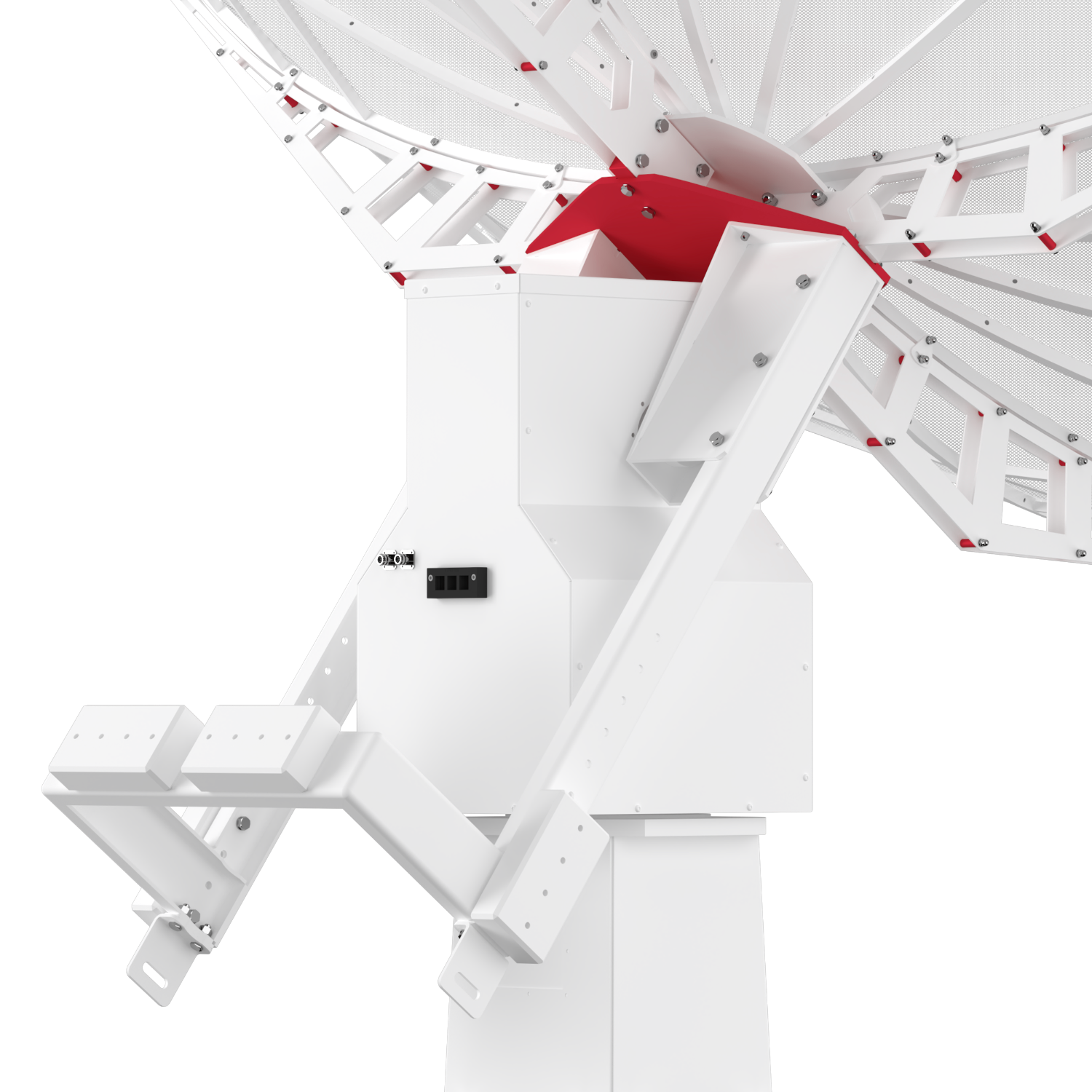
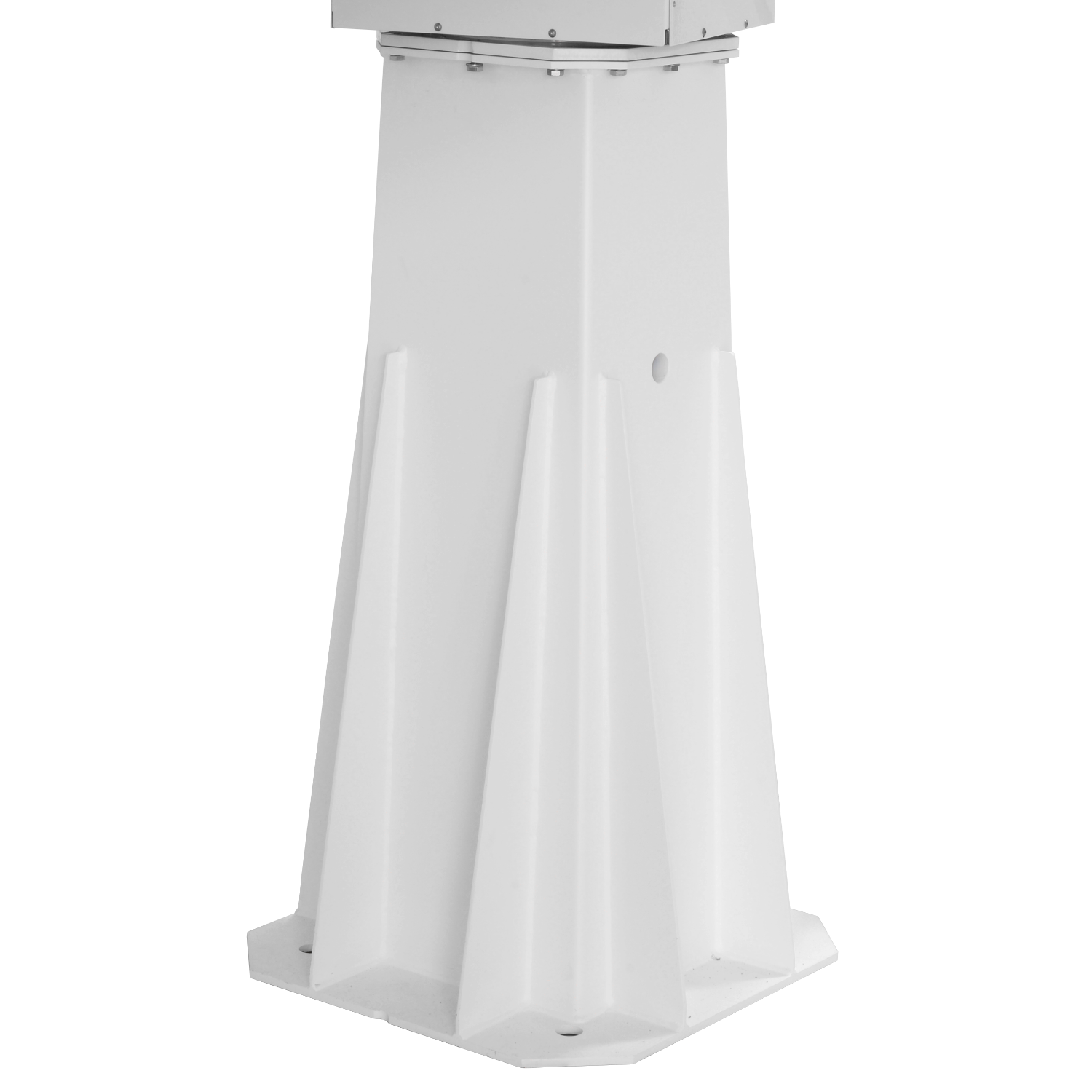
C106-HEAVY: the high load capacity pier
The WEB300-5 antenna, for its large diameter, can generate a lot of force on the ground – When combined with the weight of the WP-100 mount, a very stable and robust anchoring system is required. The C106-HEAVY pier offers all of these features, and is designed to keep the SPIDER 300A MarkII radio telescope permanently installed in the field on a concrete base that has to be prepared by the customer (an example of concrete base design is provided in the SPIDER user manual). If you want to use the SPIDER 300A MarkII without the need to fix it on a concrete base, you can add the optional C106-HEAVY-F pier with legs that is designed to allow operation of a 3 meter diameter parabolic antenna.
H142-PRO: the next generation 1420 MHz radioastronomy receiver with SPIDER radio telescopes
H142-PRO Receiver is the latest evolution of our renowned H142-One receiver, developed in collaboration with the Bologna INAF Institute of Radio Astronomy specifically for SPIDER radio telescopes. The H142-PRO maintains the professional-grade technologies used by radio astronomers in a user-friendly design, specifically designed for and available only with SPIDER radio telescopes. The H142-PRO features reduced noise level, this way providing a superior signal-to-noise ratio to improve capture of faint radio signals from astronomical sources. More, the new IPA (Integrated Programmable Attenuator) technology allows to reduce signal by preventing signal saturation when observing with SPIDER radio telescope strong radio sources like the Sun. As the previous receiver, the H142-PRO is a 1420 MHz superheterodyne type radiometer/spectrometer, double conversion (type UP/DOWN) with 50 MHz received instantaneous bandwidth (RF=1.395MHz-1.445MHz) and 14-bit analog to digital converter. The H142-PRO receiver has spectrometer with 1024 channels (61 KHz spectral resolution) that are displayed and processed in real time by the control software supplied with the radio telescope. The H142-PRO can be installed on a 19″ rack or placed conveniently on a table near the control computer, providing flexibility in various operational settings. Thanks to two dedicated IF outputs, the H142-PRO radio astronomy receiver allows to even improve performances by adding an optional backend making this the perfect instrument for educational and research institutions that want to create a radio astronomy program also developing their own electronics. Thanks to its high gain, low electronic noise, and advanced features, the H142-PRO receiver makes the SPIDER radio telescope the ideal instrument for capturing and studying the radio emissions from numerous radio sources in the Universe.

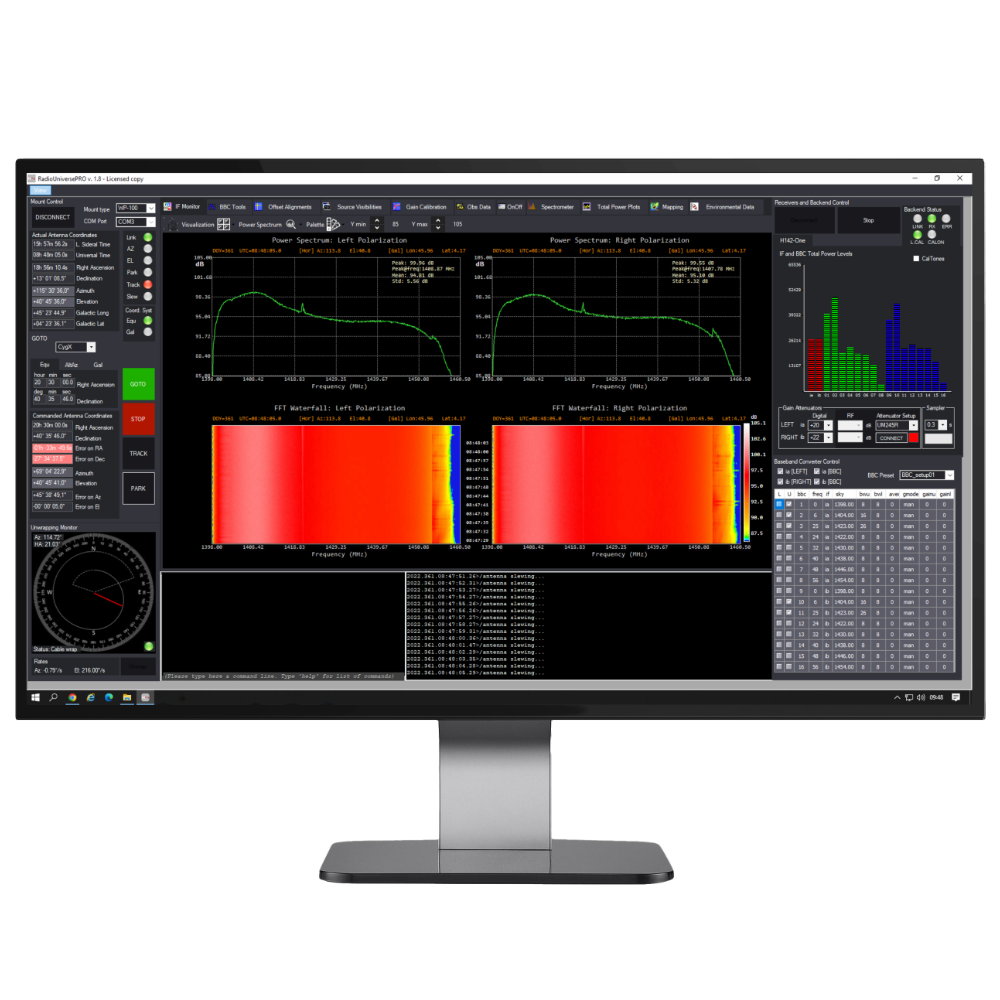
RadioUniversePRO: the control, data capture and processing software for radio astronomy
SPIDER 300A MarkII comes with RadioUniversePRO that is the most advanced software ever developed for real radio astronomy with compact radio telescopes: it gives you all the power to control the different components of your radio telescope with an immediate and easy-to-use interface. You do not have to worry about using different softwares, RadioUniversePRO is your intuitive control and data acquisition interface with the radio telescope. It allows you to control the antenna position and acquisition parameters of the receiver. This way you cannot only record data coming from the sky (deleting eventual artificial signal interferences) but also transits or radio-images of radio sources in the sky you want to study. RadioUniversePRO lets you save recorded data in graphical format as visualized on the user interface but you can also save raw data in FITS format compatible with NASA FITS Viewer, this way you can quickly open and view their data and export them to process with other softwares. System requirements are Windows 10/11 (suggested: 64 bit version), screen resolution at least 1920 x 1080, RAM memory 4 GB (suggested: 8 GB), processor i3 (suggested: i5 or i7). RadioUniversePRO is not sold separately and is supplied only with SPIDER radio telescopes. If you want to know more about RadioUniversePRO radio astronomy software for SPIDER radio telescope, click here to read the article.
SPIDER 300A MarkII 3.0 meter diameter advanced radio telescope for radio astronomy: specifications
- Antenna diameter (m): 3.0
- Antenna type: Prime focus
- Feed: optimised for 1420 MHz, LHCP and RHCP
- Working frequency: 1395 – 1445 MHz
- Bandwidth: 50 MHz
- LNA: 2 high gain and stability 1420 MHz LNA units
- Azimuth max Velocity: 2 deg/s
- Elevation max Velocity: 2 deg/s
- Encoders read resolution: 0,0015°
- Radiometer: 50 MHz instantaneous bandwidth
- A/D converter: 14 bits
- Spectrometer: 1024 channels
- Spectral resolution: 61 KHz
- Control software: RadioUniversePRO
- Weatherproof: Yes
- Operating Altitude: 3000m max, above 1000m derating of 1%/100m
- Operating Temperature: -25°C to +55°c
- Continuous wind speed for operational tracking: 50 km/h
- Maximum wind speed in stow position: 150 km/h
- Weight: 350 kg
- Supply voltage: 2×110-240V AC
- Emergency stop switch
SPIDER 300A MarkII 3.0 meter diameter advanced radio telescope for radio astronomy: site preparations
SPIDER 300A MarkII radio telescope is designed to be installed on a concrete base with an underground duct connecting the antenna to control room that the customer has to prepare before the installation (suggested design is provided in the SPIDER 300A MarkII user manual). The image below shows cables and connections that are needed to connect antenna external unit to the control room. Power and grounding systems are needed and they have to be provided by the customer.

SPIDER 300A MarkII 3.0 meter diameter advanced radio telescope for radio astronomy: optional accessories
- NSGen noise generator for calibration: specifically designed for SPIDER radio telescopes, it allows to calculate the flux in Jy of a radio source or sky area, by compensating atmospheric attenuation or any gain loss because of different factors (for example, antenna deformation because of its weight). The NSGen noise generator is installed on the SPIDER H-FEED for 1420 MHz frequency and connects directly to the H142-PRO radio astronomy receiver of SPIDER radio telescopes.
- Radio-over-Fiber kit for SPIDER radio telescope: it allows you to have fiber optic cable connecting the antenna to the H142-PRO radio astronomy receiver in the control room, instead of the standard coaxial cables. This way you remove the normal gain loss because of cable length and you improve even more performances of your SPIDER radio telescope.
- Mount-over-Fiber kit for SPIDER radio telescope: it allows to remotely control the radio telescope from very long distances by replacing the network cable with a dedicated optical fiber that can be up to 2km long.
- Internal cooling system: suggested in case of climatic conditions with very high temperatures, if the internal temperature in the antenna tracking system head exceeds +55°C (can be installed only when ordering, it is not possible to add it later).
- BKND-Pro professional backend: by adding it to H142-PRO receiver of SPIDER radio telescopes, BKND-Pro backend allows you to sample the signal with higher spectral resolution than the integrated H142-PRO spectrometer, this way bringing the most advanced professional technology to the world of education for radio astronomy and SETI applications with SPIDER radio telescopes.
- Wind sensor for SPIDER radio telescopes: integrated with RadioUniversePRO software, it allows to continuously read the speed and direction of the wind for safety reasons: this way, if the wind speed exceeds the safety speed, the radio telescope is automatically moved in a safe position with the antenna pointing the Zenith, thus reducing the wind load on the antenna.
- CMP-19 computer for SPIDER radio telescopes: this is a Windows 10 Pro computer that can be installed on a standard 19″ rack and it’s the best solution to install RadioUniversePRO software and remotely control SPIDER radio telescopes. CMP-19 has the same form factor of all the other Radio2Space instruments that can be installed on a rack.
- RK19 rack for SPIDER radio telescopes: it’s the rack designed to allow you install all the receivers and accessories that fit in a 19″ rack. RK19 has 24 units, it comes with a Power Distribution Unit (PDU) to let you connect (with remote on/off) up to 8 devices and 4 fans with temperature sensor to keep control on your devices temperature.
- C106-HEAVY-F pier with legs: it allows you to use SPIDER 300A MarkII radio telescope without the need to fix it on a concrete base, thanks to the specially designed legs. C106-HEAVY-F pier with legs weights 200 kg, it’s designed to allow operation of a 3 meter diameter parabolic antenna.
- “Radioastronomy: introduction to invisible sky” book: Are you interested in radio astronomy? Do you want to know how do radio telescopes work? This book will allow you to discover the amazing world of the Universe that our eyes cannot see but that we can study with radio techniques. Author Filippo Bradaschia (founder of PrimaLuceLab) explains the different themes of this science in a simple and understandable format thanks to a series of pictures and illustrations and where possible without using complicated formulas.
SPIDER 300A MarkII 3.0 meter diameter advanced radio telescope for radio astronomy: dimensions
SPIDER MarkII radio telescopes for radio astronomy: much more than an antenna
SPIDER MarkII radio telescope is the result of 10 years in research by PrimaLuceLab engineering team that designs, develops, assembles and tests in-house all our radio telescopes. This way SPIDER MarkII radio telescopes provide unmatched performance by standard off-the-shelf antennas that are not designed for radio astronomy: better tracking and pointing precision, higher sensitivity, dedicated radio astronomy software, better engineering quality and great italian design!
Since we create SPIDER MarkII radio telescopes in our factory in Italy, you can take advantage of the direct relation with the us that are the real radio telescope manufacturer. Our pre-sale service can help you in everything you may need before your radio telescope order. Our post-sale support can provide you with updates for hardware and software products that we specifically develop for our radio telescopes. Our internal team of trained technicians is also able to install SPIDER MarkII at your location, all around the World!
